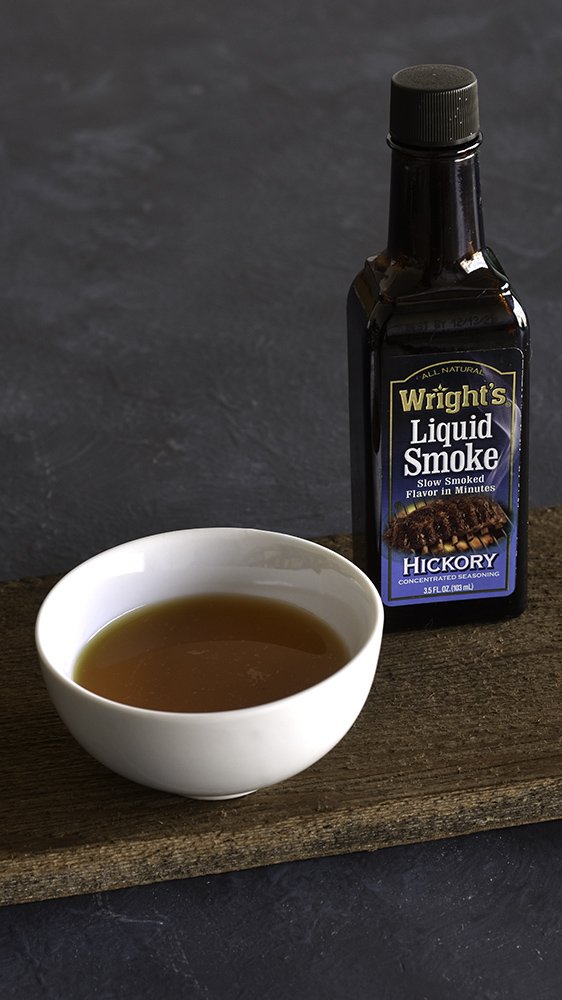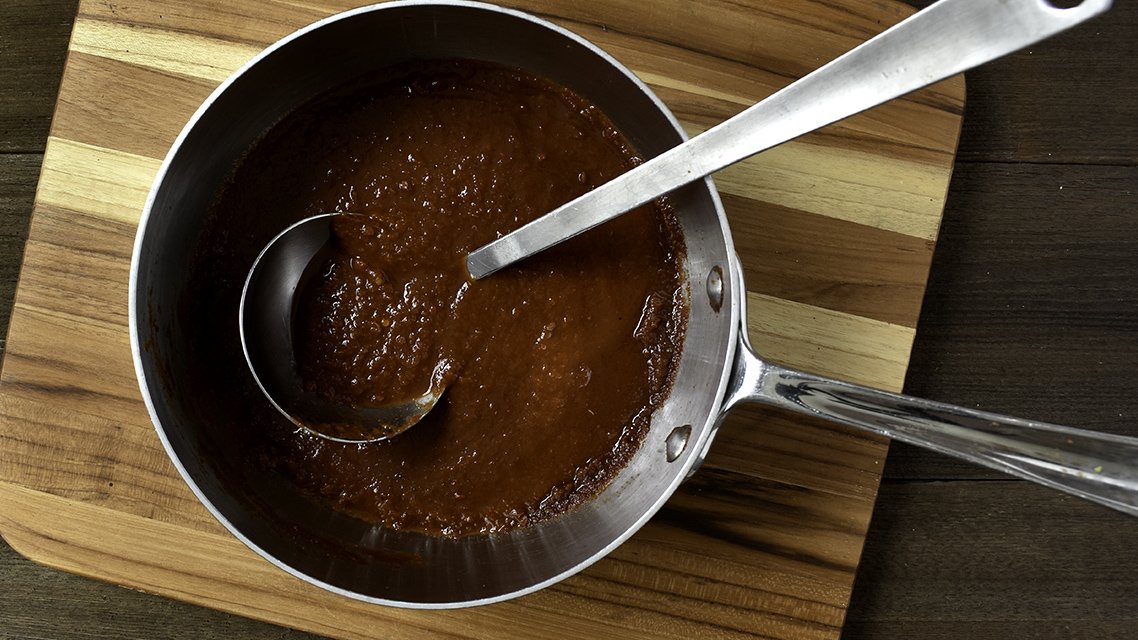Liquid Smoke in a Healthy Plant-Based Diet?
Many people are suspicious of liquid smoke. I was too. Now I feel confident that a little liquid smoke in my recipes is perfectly fine and not a health hazard. Here are answers to common questions about liquid smoke, with links to more details if you’re interested.
Is liquid smoke animal-free?
Yes, no animals or animal products are used to make liquid smoke.
How is liquid smoke made?
It’s literally made from smoke. I kid you not. Wood (usually sawdust or chips left over at wood mills) is burned, and the smoke is collected in condensers (the water converts from gas to liquid when the smoke hits the cold condensers). The resulting liquid is filtered and concentrated down. The concentrated flavor is mixed with water to make the jars of liquid smoke we see in the grocery stores. The different flavors of liquid smoke (hickory, mesquite) come from manufacturers including some wood of these types in the burning process.
Some brands add seasonings like vinegar, molasses, and/or caramel color. But many brands contain nothing but water and smoke concentrate.
Is there a risk of cancer with liquid smoke?
We know that smoking is bad, as is eating charred meat, but what about liquid smoke? The good news is that most of the carcinogens known to be associated with smoke and char are fat soluble, meaning when a water-based solution is made, like liquid smoke, these carcinogens have nothing to cling to, so they are not retained.
The most relevant research study, from 1993, looked at five different carcinogenic compounds in liquid smoke products and some smoked meats. The recommended daily upper safety limit for these carcinogens is 47 micrograms. Hickory liquid smoke contains only 0.8 micrograms per teaspoon, meaning you’d have to consume a whole lot of liquid smoke to get to one day’s upper limit. Dr. Michael Greger does not consider liquid smoke a health risk. For more on health-related research, see Dr. Greger’s video here or this very good Super Foodly post.
Why does liquid smoke taste like chemicals sometimes?
“Less is more” is the appropriate mantra for using liquid smoke. Using more than 1/2 teaspoon in a recipe appears to be the reason for that “chemical taste,” food writers and social media discussants agree. This has been my experience as well. Adding more liquid smoke after about 1/2 teaspoon doesn’t add the flavor you want—it just adds bitterness and that ashy flavor. So keep it modest.
Best brands to buy?
Wright’s Liquid Smoke is the agreed-on favorite among aficionados. Lucky for us, Wright’s is available in many regular grocery stores. It has no added color or other ingredients. It’s just….smoke and water.
Plant-based recipes that benefit from liquid smoke
Smoked paprika. I like the Spanish brands best.
Any plant-based dish with a barbecue flavor might benefit from liquid smoke. I use it in my Healthy, Tangy BBQ Sauce. Most recipes for plant-based bacon (using coconut shreds, carrots, shiitake mushrooms, or other base) and carrot hot dogs use liquid smoke. Recipes with “smoky” in the title likely feature liquid smoke: smoky baked beans, smoky tofu or tempeh, smoky pulled “pork” mushrooms, etc.
What’s a good substitute for liquid smoke?
I use smoked paprika in a lot of my recipes. It is my “smoky” ingredient of choice. It’s only in my BBQ sauce, so far, that I chose to use both smoked paprika and liquid smoke. The latter adds a very specific, sharp essence of wood smoke, whereas the smoked paprika has a mellower, vegetal edge.
Bottom line?
I will continue to use liquid smoke sparingly, because a little goes a long way, and only in recipes where I really want that hint of wood smokiness.
Bacon-tasting coconut shreds




